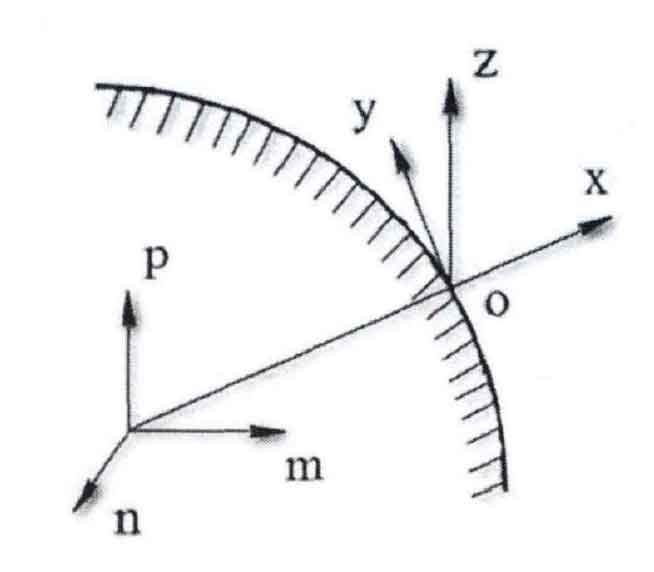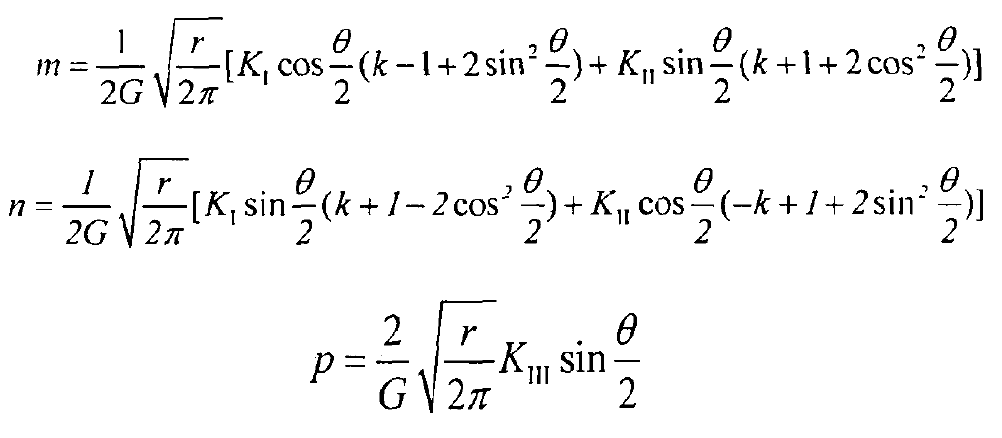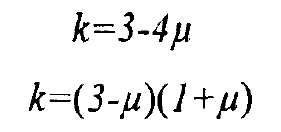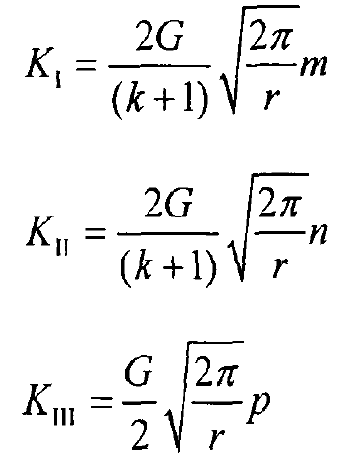The characteristics of crack propagation under the influence of external force factors are as follows:
1) The crack surface is stressed in the normal direction, resulting in the open propagation mode;
2) The slip propagation mode under the joint action of the shear stress in the horizontal direction of the crack surface and the normal direction of the crack tip;
3) The tearing propagation mode is formed under the action of the horizontal shear stress on the crack surface and the front end of the crack. When two or three of the three types of cracks occur at the same time and are jointly affected by shear stress and normal stress, the formed crack is called composite crack.
When calculating the displacement field at the crack tip, refer to linear elastic fracture mechanics, as shown in the figure, which is the set coordinate system at the crack tip. The meaning of each coordinate axis in this coordinate system is: the normal direction of the crack front is set as JC axis, the direction perpendicular to the normal of the crack front is set as y axis, and the tangent direction of the crack front is Z axis.
Set the positioning displacement as m, N and P, and the corresponding coordinate axes are x, y and Z axes respectively. The displacement field formula is expressed as:
Where, R θ— Polar diameter and polar angle of polar coordinates; G – shear elastic modulus; Ki, Kii, kiII – type I, II and III stress intensity factors.
Under the joint action of plane stress and strain,
The stress intensity factor at the crack tip can be obtained from the formula:




